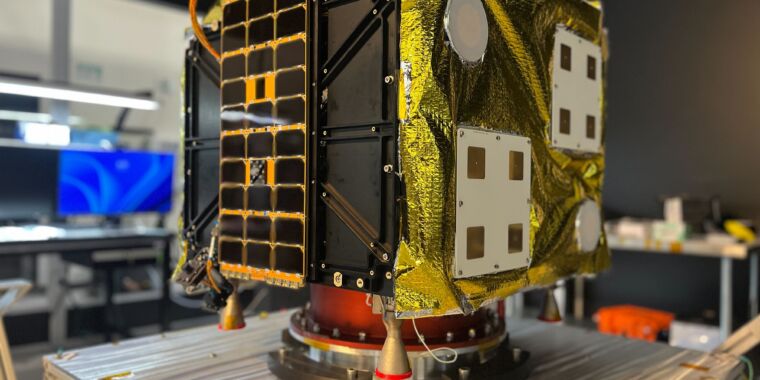On Tuesday the co-founders announced that they have successfully raised $40 million in Series A funding and shared plans for their next two missions. AstroForge has now raised a total of $55 million to date.
…
However, Gialich said AstroForge learned a lot from this mission and is working toward launching a second spacecraft named Odin. This will be a rideshare payload on the Intuitive Machines-2 mission, which is due to launch during the fourth quarter of this year. If successful, the Odin mission would be spectacular. About seven months after launching, Odin will attempt to fly by a near-Earth, metallic-rich asteroid while capturing images and taking data—truly visiting terra incognita. Odin would also be the first private mission to fly by a body in the Solar System beyond the Moon.
…
On Tuesday, the company also announced plans for its third mission, Vestri (the company is naming its missions after Norse deities). This spacecraft will be about twice as large as Odin and is intended to return to the targeted metallic asteroid and dock with it. The docking mechanism is simple—since the asteroid is likely to be iron-rich, Vestri will use magnets to attach itself.



Hypothetically, it would only make sense to mine rare materials in space, and it would only have environmental benefits if we return significant amount compared to the mass of rockets we send into space.
There is no coal/gas/oil in space, and even if extracting these resources were cleaner, burning that stuff would still be disastrous.
Space mining would be at best viable for very niche uses for a few material. It won’t bring us infinite clean resources, overall we still need to reduce extraction of resources.
If you engineer for it, you can send up a machine to fabricate the miners with raw resources. Then you just have to send up a couple starter miners and you never have to send another rocket up. Infinite resources down (limited by time). Solar power to drive the machines. Hell the manufacturer can double as basic initial processing plant and drop purified metals.
There miners robot don’t exist yet, but they would probably require high tech components and manufacturing capabilities for all these different components (motors, electronics, batteries, sensors, …).
Self replicating robots is still science fiction. If we wanted to build such robots in space, we’d need to build and launch manufacturing facilities in space before we can actually build robots in space.
Coal is a basic substance, so it is in the space. Maybe there is not likely oil or gas ( although I believe methan should be pretty much available everywhere as it’s simple substance ), uranium will be in space for sure. Maybe even mining dead stars or close to dead would be possible in the future, who knows